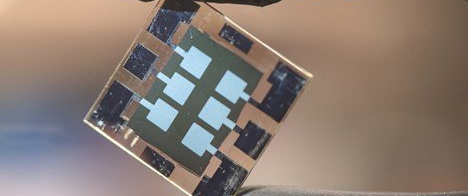Solar cells created with perovskite minerals can be an important tool in the race to deploy clean energy as quickly and cost effectively as possible.

Compared to solar energy cells made with crystalline silicon, which are the most common type on the market today, perovskite has the potential for much quicker production. This new PV technology can help diversify the solar supply chain and reduce costs, but only if we first overcome key technological hurdles.
Perovskite solar cells have shown great potential in the lab, yet several challenges stand in the way of their commercialization. As the U.S. Department of Energy Solar Energy Technologies Office (SETO) outlines in a recent peer-reviewed article, perovskite researchers, engineers, and companies focused on its potential should heed the lessons of past solar commercialization efforts and make patient and careful investments to achieve the magnitude of progress needed for commercial deployment.
We can learn important lessons from the story of copper indium gallium selenide (CIGS) PV cells. CIGS devices were once considered a promising competitor to traditional silicon solar cells, but a lack of standardization, economic assessments, and cooperation among panel manufacturers led to unrealistic expectations among investors. In the early 2000s, early bankruptcies led to investor burnout and the slowdown of CIGS technology commercialization.
Avoiding similar pitfalls for perovskite cells requires carefully and patiently addressing the technical challenges of a manufacturing process before the technology is scaled up.
Here are four ways SETO is working to overcome hurdles and spur innovation toward the deployment of this promising solar technology:
- Durability: Water and oxygen can corrode and break down perovskite PV. To compete with commercially available technologies, perovskite PV must be able to survive at least 20 years outdoors. It must be able to withstand all kinds of weather and temperature changes while converting solar energy to electricity with at least the same efficiency as other commercial PV technologies. Outdoor testing alongside lab research is necessary to better understand the most harmful types of degradation and mitigate them. SETO funds research and development projects to help perovskite PV modules become more durable.
- Efficiency at scale: While small perovskite cells are highly efficient, in that they convert a greater percentage of the sun’s energy into electricity than nearly all thin-film technologies, cells larger than 1cm2 are less efficient. Perovskite cells of every size should meet standard performance targets before the technology can be scaled up. SETO coordinates research efforts across academia, national laboratories, and industry to help achieve these targets.
- Cheap and robust manufacturing: Once perovskite PV modules are sufficiently stable and efficient, the next hurdle will be repeatedly and reliably producing them in a large-scale manufacturing facility. However, currently small environmental changes, like room temperature and humidity, or process conditions (e.g., ink expiration dates, manufacturing speed) can threaten the quality of the product. SETO invests in research and development projects that advance progress toward highly repeatable module production.
- Bankability: Companies will need to prove that the technical challenges of perovskite panels have been solved so that investors will be confident enough to finance the panels at reasonable interest rates. SETO-funded efforts such as the Perovskite PV Accelerator for Commercializing Technology (PACT) are designed to help perovskite startups validate their technology’s efficiency and outdoor durability to help build this confidence and foster investment.
In addition to these four focus areas, SETO supports activities across the perovskite PV space with the goal of advancing research, development, demonstration and eventual deployment of this promising technology. Specifically, the Perovskite Startup Prize is designed to accelerate the development of new perovskite solar companies, while established startups can apply for funding through the Small Business Innovation Research program and more mature companies are eligible for the Incubator research program.
To further advance this work, SETO included funding for a Solar Manufacturing Accelerator in its Fiscal Year 2023 Budget Request, which may help establish domestic manufacturing capabilities for advanced PV technologies, including perovskites, that are less reliant on foreign-sourced materials.
Blog Credit -
EERE




